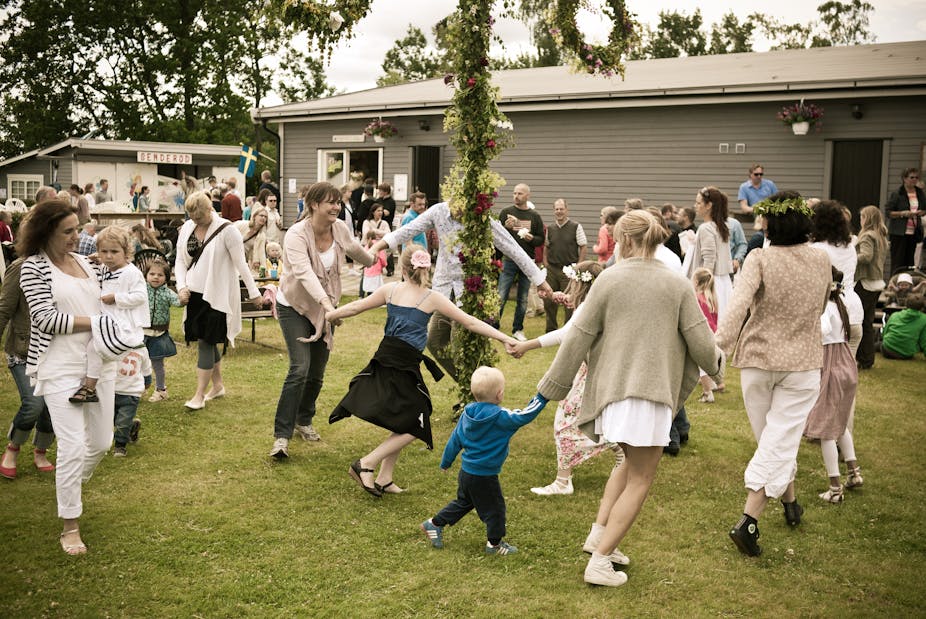Earlier this year, British travel writer and resident of Denmark, Michael Booth, riled Guardian readers with a provocative article claiming to dispel the myth of Scandinavia as the perfect place to live. Many are now confused. Is everything we believed about the social ideals of Sweden, Denmark, Norway and Finland a lie? Well, not entirely but we’re not all drunk serial killers either.
Based largely on his book, The Almost Nearly Perfect People: The Truth About the Nordic Miracle, Booth’s “revelations” about the rot eating away at Scandinavia’s welfare societies were meant to “correct the imbalance” of the recent utopian idealisation of the Nordic countries in the British media.
It’s true that the Nordic countries have received unprecedented good press in the UK. This is partly due to a a trend that emerged in the early years of the 21st century for assessing the well-being of nations not according to their GDP but other, more human factors. Nordic countries consistently come out top.
In the 2005-2011 Gallup World Poll, Denmark ranked first for happiness, followed by Finland and Norway. The OECD’s Better Life Index of 2012 had Norway, Sweden and Denmark among the top five nations and the 2014 State of the World’s Mothers report from Save the Children, assessing the well-being of mothers and children world wide, had five Nordic countries in the top six. Meanwhile, lifestyle magazine Monocle’s Quality of Life survey named Copenhagen the most liveable city in the world for the third time in 2014.
But these figures are starting to be undermined by people in many different quarters. If life is perfect in Scandinavia, why are there so many dramas and books that depict Nordic societies as rampant with corrupt institutions, alcoholics, dysfunctional families and men who are violent against women? These dark depictions can’t come out of a clear blue Nordic sky.
While the Killing and The Bridge are new though, interest in the rotten states of Scandinavia is not. The perception of the Nordic countries abroad has swayed between two extremes for nearly a century.
In 1936, the American journalist Marquis Childs published the international bestseller Sweden: The Middle Way. Written in the time of the Great Depression, Childs viewed the Swedish Social Democratic compromise between liberal capitalism and state communism as a pragmatic model that could guarantee full employment, social security and equality without jeopardising economic development and democratic institutions.
In the 1970s, the image changed radically with the British journalist Roland Huntford’s book The New Totalitarians. To Huntford, Swedes, dominated by the Social Democratic party for 40 years, had come closer to living in Aldous Huxley’s dystopian Brave New World than the Soviets. Even Sweden’s otherwise much admired sexual liberalism became an expression of totalitarian state control in Huntford’s eyes. High suicide rates and heavy taxation were other less than perfect trends he sought to highlight.
The utopian view has since made a come-back but perhaps that is less of a reflection on Scandinavia and more of the rest of the world. Global recession and austerity have taken their toll across Europe in recent years and people are starting to look around for better models. When fearing the corrosion of well-being and social cohesion, it is natural to seek consolation elsewhere, even if that elsewhere only exists in the imagination (as any good utopia) or in surveys that lack any form of cultural context.
Defending his dystopian counter-narrative against thousands of critical comments on The Guardian, Booth explained that his portrayal of jingoistic Danes on anti-depressants, lethargic Norwegians drunk on oil wealth, and gun-toting, binge-drinking Finns is largely based on what Scandinavian experts themselves have reported. That said, you could equally argue that he has carefully selected data to prove a predetermined narrative.
Booth’s book does prove an important point regarding perceptions of the Nordic countries, though. Scandinavians are predominantly satisfied with their lives but they are not utopians. Nor are they blinded by their success. They might not experience social problems on the same scale as people in other countries but they still fiercely debate what issues they do have. These include the purpose of the welfare state in the 21st century and how large it should be.
The Nordic countries are real places – not utopias – and as many other countries they struggle to overcome social divisions as they adjust to changing global realities. Austerity measures and welfare reforms have been implemented across the nations and it seems no entitlement previously guaranteed by the welfare state is off the table when it comes to cuts. A rise in mental illness may be the first severe consequence of widening socioeconomic gaps in the Nordic countries – just the kind of problem that is proving so fascinating to lovers of dark Nordic crime stories abroad.

